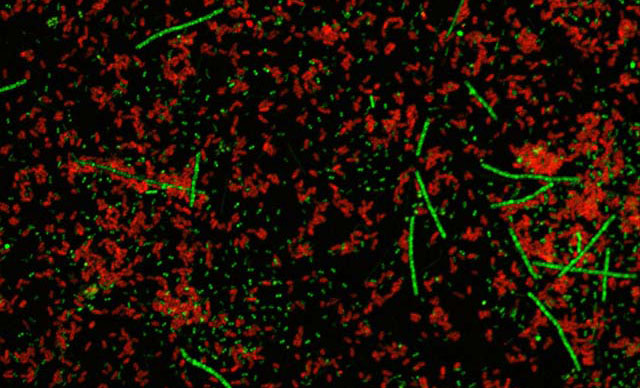Our mission
To explore and understand the microbial world using ecogenomics.
The Australian Centre for Ecogenomics collaborates on active research projects to strengthen our understanding of Australia’s vital microbial communities. We also provide a high-quality sample processing service.
Based at UQ's School of Chemistry and Molecular Biosciences, we are led by Professor Phil Hugenholtz.
Integrated ecological framework
Our understanding of the microbial biosphere was historically limited because we were unable to grow most microbes in the lab. Culture-independent molecular technologies introduced over the past 30 years have helped us overcome this cultivation bottleneck.
These culture-independent molecular technologies include:
- 16S rRNA gene amplicon profiling of communities
- metagenomics and metatranscriptomics: sequence-based methods that rely on low-cost, high-throughput sequencing of DNA and RNA extracted directly from environmental samples
- cell sorting and whole-genome amplification methods that provide a natural complement to ‘whole’ community characterisation methods
- 16S rRNA-based fluorescence in situ hybridisation (FISH) to image specific groups of microbes
- genome-based classification of bacteria and archaea
- comparative genomics to obtain insights into microbial ecology and evolution.
We define the combination of these techniques as ‘ecogenomics’, which can be used to obtain a holistic overview of microbial communities.
Contact us
For more information, or to discuss a project, email Mrs Caroline Moniz, Centre Coordinator, at c.moniz@uq.edu.au.
Harnessing microorganisms
Microorganisms are more than disease agents – they're the most abundant, diverse and ubiquitous forms of life.
In the natural world, microorganisms are globally significant and drive the biogeochemical cycles that sustain life. They directly influence our climate.
Increasingly, researchers harness microorganisms for their diverse metabolic abilities.
Examples include:
- recovering rare earth elements from mine tailings using highly specific microbial proteins
- bioremediation and rehabilitation through microbial activities, for example, acceleratiing soil formation from bauxite residues (red mud)
- using microorganisms to indicate ecosystem health, for example in the Great Barrier Reef
- heat-tolerant enzymes obtained from thermophilic microbes for industrial applications.

